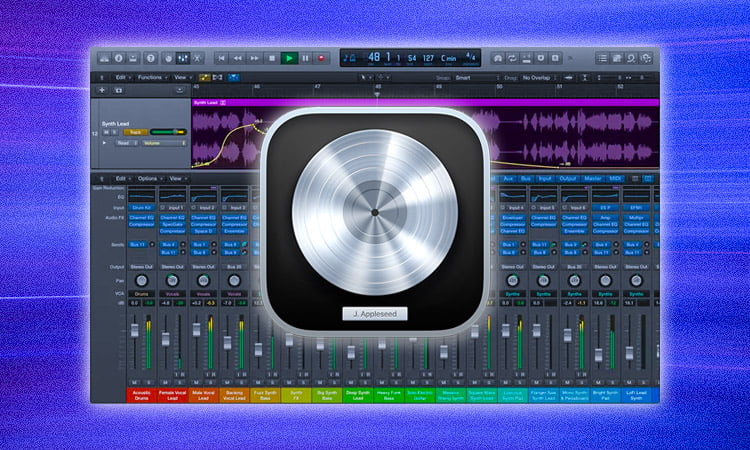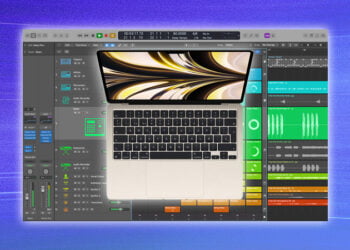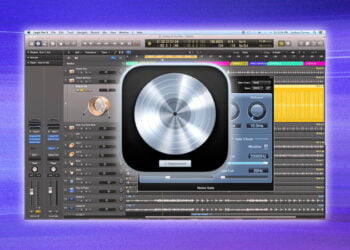Creating a smooth and unique sound can be a challenge, especially for those new to Logic Pro X.
One way to stand out is to produce songs with a distinct sound.
In this blog post, we’ll be taking a look at how to make 808 glide in Logic Pro X.
808 glide is a sound effect that adds a smooth, melodic glide to any 808 bass line.
It’s an essential part of producing a unique and contemporary sound.
We’ll be breaking down the process and providing step-by-step instructions on how to make it happen.
Read on to find out how to make 808 glide in Logic Pro X and how to make your tracks stand out from the rest.
Setting up 808 sounds
The first step to making an 808 glide in Logic Pro X is setting up the 808 sounds.
To do this, begin by finding the 808 sound you want to use in the library.
Add it to the project by dragging and dropping it into the track window.
Once the 808 sound is in the project, you’ll need to adjust the attack and release times.
This is done in the parameters section.
Adjust the attack and release times to your preference.
You’ll also want to adjust the pitch and scale of the 808 sound, if desired.
Finally, adjust the velocity and make sure the volume is at the desired level.
Using the Autopan effect
The Autopan effect is essential for creating a smooth 808 glide in Logic Pro X.
To use it, open the channel strip for the 808 and select the Autopan effect.
Then, adjust the speed and depth of the Autopan to achieve the desired glide effect.
For more precise control, use the equalizer to shape the frequency response of the sound.
Finally, use the gain knob to adjust the overall volume of the 808.
By combining the Autopan effect with other EQ and gain shaping tools, you can get your 808 sounding exactly the way you want it.
Adjusting the pitch of the 808
The third step of making an 808 glide in Logic Pro X is adjusting the pitch of the 808.
This is critical to creating a smooth transition between notes and adding an interesting melodic element to the track.
To adjust the pitch, click on the 808 track in the mixer and select the pitch control in the inspector window.
Then, click and drag the pitch slider up or down to adjust the pitch, or use the arrow keys to make small adjustments.
Be sure to listen to the track as you adjust the pitch to make sure it sounds just right.
Adding Glide to the 808
Adding glide to the 808 is a great way to give your track some extra character and movement.
To do this, first select your 808 in Logic Pro X.
Next, click the ‘Glide’ button in the 808’s interface.
This will bring up the Glide window.
Here, you can adjust the glide time, pitch, and decay.
The glide time determines how long it takes for the pitch to glide from one note to the next, while the pitch sets the amount of pitch change between notes.
Finally, the decay knob adjusts how fast the pitch decays over time.
Make sure to adjust these settings to your taste before hitting the play button and listening to your 808 glide!
Utilizing the pitch envelope
In order to create a more authentic and dynamic 808 sound, you can use the pitch envelope in Logic Pro X.
This will allow you to control the pitch of the 808 over time, allowing for a much wider range of sounds.
To do this, select the 808 sound you want to use and open the Pitch Envelope window.
Set the envelope to “freehand” mode, and use the pencil tool to draw your desired pitch curve.
You can create a smooth, gradual transition or a more jagged, aggressive one.
Experiment with different curves and see what works best for your track.
Adjusting the filter
Once you have the 808 loaded, you can adjust the filter settings to customize the tones you’re working with.
To do so, select the 808 from the list of instruments and navigate to the Filter tab.
Here you can choose from different types of low-pass and high-pass filters, as well as controls to adjust the resonance, frequency, and envelope of the filter.
With the right settings, you can make your 808s sound a bit more aggressive or smoother, depending on what you’re looking for.
Experiment with the different settings to find the right one for your project.
Adding an amplitude envelope
Now it’s time to add an amplitude envelope.
This is where we can shape the 808’s tone over time.
Start by selecting the 808 track and open up the “Envelope Fader” window.
Then, click on the “Draw” button and draw out the shape you’d like your amplitude envelope to have.
Make sure to keep the attack and decay settings low to keep the 808’s sound intact.
You can experiment with different settings to find the one that sounds best with your track.
To make the 808 glide, adjust the attack and decay settings to create a slow-moving shape.
This should make the 808 sound like it’s smoothly gliding across your track.
Adjusting the overall volume of the 808
The 808 is a powerful tool in Logic Pro X, but to get the best results, you need to make sure the overall volume is adjusted correctly.
To do this, simply go to the “Mixer” tab and select the track you want to adjust.
Then, look for the “Master Fader” slider, located near the top of the track.
This controls the overall volume of the track, so adjusting it will affect the 808’s sound.
Move the slider up and down to find the sweet spot for the 808’s volume.
Conclusion
To summarize, creating an 808 Glide in Logic Pro X is relatively straightforward and can add a unique touch to your beats.
Using the Flex Tool, you can add the desired glide to any 808 sample, as well as adjust the speed and depth of the effect for the desired result.
With just a few simple steps, you can give your track a creative twist and move away from the traditional 808 sound.






















